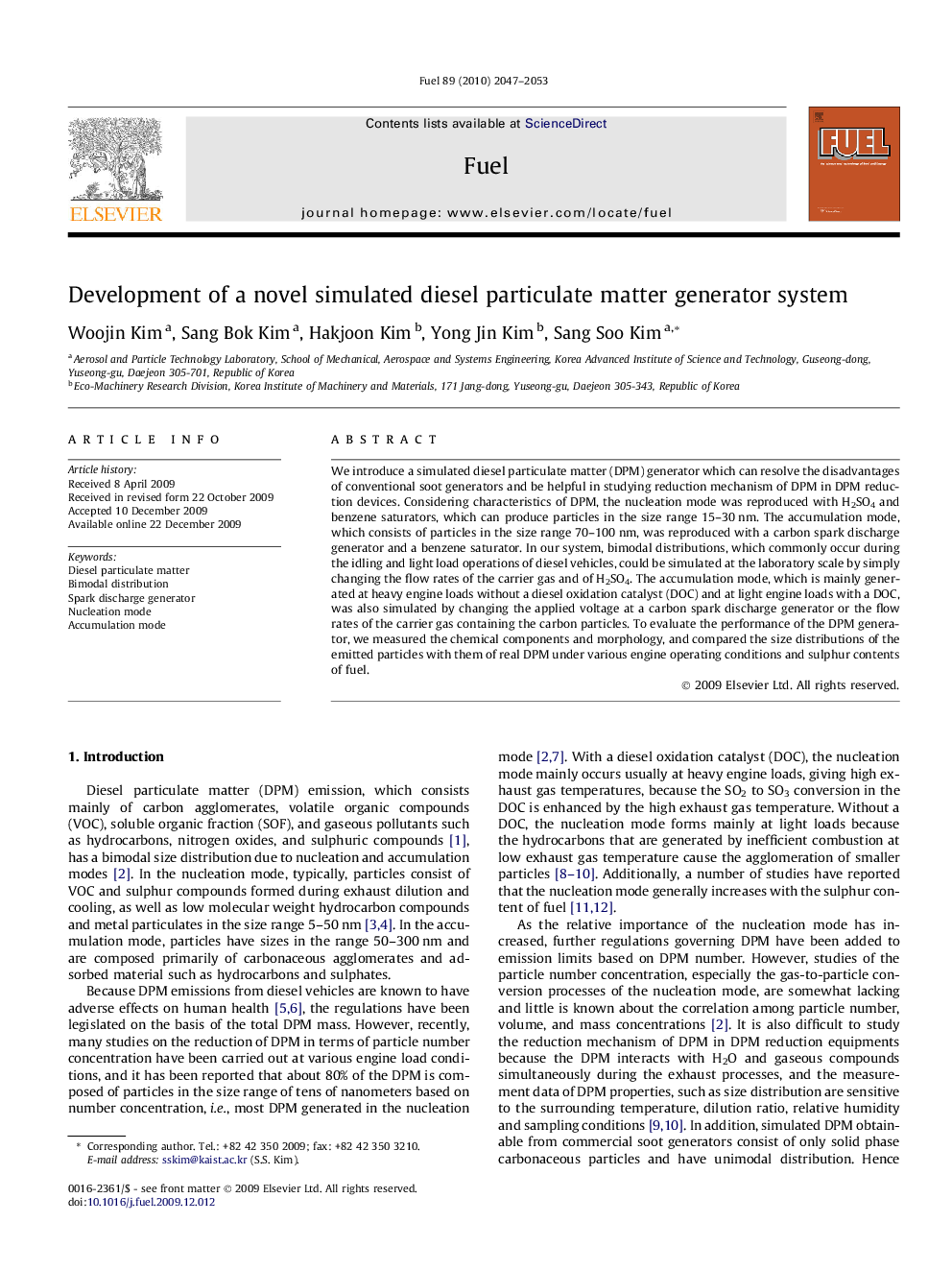| Article ID | Journal | Published Year | Pages | File Type |
|---|---|---|---|---|
| 207175 | Fuel | 2010 | 7 Pages |
We introduce a simulated diesel particulate matter (DPM) generator which can resolve the disadvantages of conventional soot generators and be helpful in studying reduction mechanism of DPM in DPM reduction devices. Considering characteristics of DPM, the nucleation mode was reproduced with H2SO4 and benzene saturators, which can produce particles in the size range 15–30 nm. The accumulation mode, which consists of particles in the size range 70–100 nm, was reproduced with a carbon spark discharge generator and a benzene saturator. In our system, bimodal distributions, which commonly occur during the idling and light load operations of diesel vehicles, could be simulated at the laboratory scale by simply changing the flow rates of the carrier gas and of H2SO4. The accumulation mode, which is mainly generated at heavy engine loads without a diesel oxidation catalyst (DOC) and at light engine loads with a DOC, was also simulated by changing the applied voltage at a carbon spark discharge generator or the flow rates of the carrier gas containing the carbon particles. To evaluate the performance of the DPM generator, we measured the chemical components and morphology, and compared the size distributions of the emitted particles with them of real DPM under various engine operating conditions and sulphur contents of fuel.
